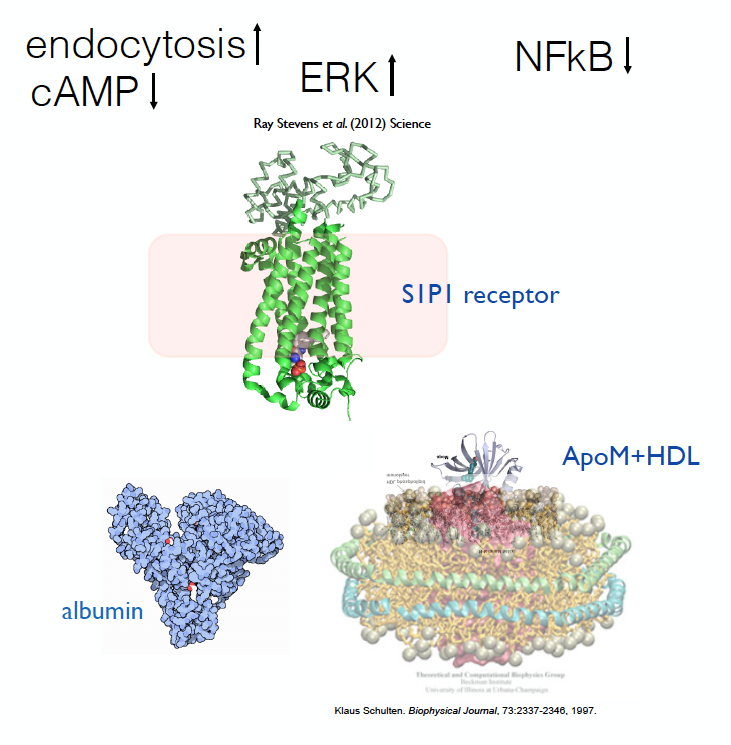There are five high-affinity G protein-coupled receptors (GPCR) for S1P, termed as S1PR1-5. In the figure shown below, activation of S1PR1 by chaperone-bound S1P is schematically represented. Most cells express one or more subtypes of S1PRs. S1PR1 is abundantly expressed in the vascular endothelium while most cells express this receptor at a lower level. S1PR1 function is required for stabilization of the primary vascular network during development and is critical for vascular barrier function and promotion of normal vascular homeostasis in the post-natal period. Importantly, S1PR1 signaling is important in shear stress-induced signal transduction in the endothelial cells (Jung B, Obinata H, Galvani S, Mendelson K, Ding BS, Skoura A, Kinzel B, Brinkmann V, Rafii S, Evans T, Hla T. Flow-regulated endothelial S1P receptor-1 signaling sustains vascular development. Dev Cell. 2012 Sep 11;23(3):600-10). In mice that lack this receptor in endothelial cells, cellular morphology and polarization are altered. We are examining the role of S1P receptor-associated proteins in signal transduction pathways (Gi-coupled, ß-arrestin-coupled) and biological functions (cytoskeletal rearrangement, cell-cell and cell-matrix junction assembly, migration, collective behavior). The biological consequences are examined in mouse models of single and compound S1PR knockouts and S1PR1 inducible transgenic mice.
S1PR signal is attenuated by receptor endocytosis and is re-established by recycling to the cell surface. We identified that S1PR1 endocytosis is a key determinant of lymphocyte recirculation in vivo (Thangada S, Khanna KM, Blaho VA, Oo ML, Im DS, Guo C, Lefrancois L, Hla T. Cell-surface residence of sphingosine 1-phosphate receptor 1 on lymphocytes determines lymphocyte egress kinetics. J Exp Med. 2010 Jul 5;207(7):1475-83). We are in the midst of a high content screen to identify cellular regulators of S1PR1 endocytosis. Our hypothesis is that some of these factors would be important in biological actions of S1PRs in vascular development, homeostasis and disease.
